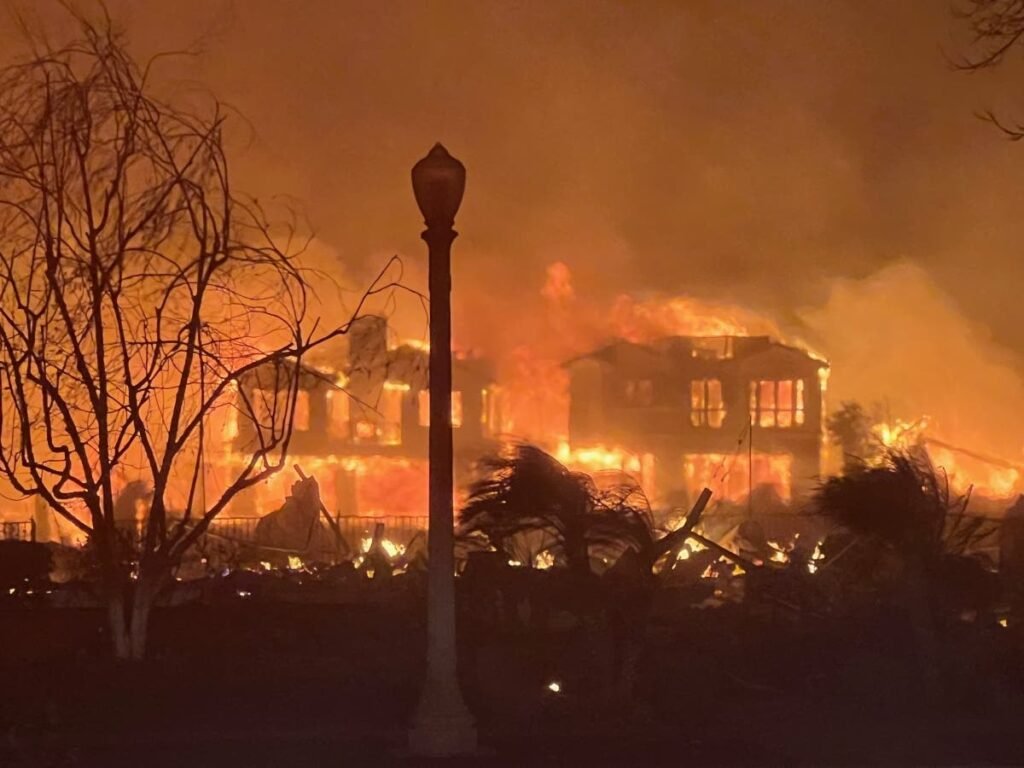Orange County Firefighters Battle Devastating Wildfires Amidst Growing Climate Concerns
As night fell over Orange County, the air was thick with smoke and uncertainty. At the front lines of the Palisades and Eaton fires, firefighters from the Orange County Fire Authority (OCFA) were hard at work, their faces illuminated by the flickering glow of flames. With their boots sinking into scorched earth, they fought not just against the rampant blaze, but against the relentless forces of nature exacerbated by climate change.
Under Duress: Challenges Facing Firefighters
The conditions under which firefighters operate are becoming increasingly perilous. Climate models indicate that California’s fire seasons are now extending by an average of 75 days since the mid-1980s. “We are witnessing a dramatic shift in fire patterns,” noted Dr. Elena Ramirez, a climatologist at the California Institute of Environmental Studies. “The interplay of drought, heat, and strong winds make it a perfect storm for wildfires.”
This week, OCFA responded with three engine strike teams, the Santiago Handcrew, and one Firehawk helicopter to tackle the destructive flames overwhelming Los Angeles County. In support, two engines from the Newport Beach Fire Department also mobilized, emphasizing a collaborative effort to safeguard vulnerable communities.
Community Impact
Many families in affected areas, including Laguna Beach and Rancho Santa Margarita, faced Public Safety Shutoff notices, adding to the anxiety of residents already facing evacuation orders. “When you lose power, it’s not just a convenience issue; it’s about safety. Many people rely on electricity for medical devices, and disruptions can be life-threatening,” warned Susan Pritchard, an emergency management specialist.
- Power Shutoffs: Residents were advised of potential shutoffs due to high risks of wildfires.
- Evacuations: Speedy evacuations are critical as flames threaten homes.
- Community Response: Local fire departments collaborated actively in firefighting efforts.
The flames from the Palisades and Eaton fires were not just destroying property but also threatening lives, as dry vegetation and high winds exacerbated the crisis. “This fire season is a stark reminder of our vulnerability, and what’s at stake if we fail to confront the climate crisis seriously,” Dr. Ramirez elaborated.
The Science Behind Increased Fire Risk
Recent studies from the University of California, Davis, indicate a direct correlation between rising temperatures and an increase in wildfire frequency. The study, which analyzed data over the past four decades, showed that for every 1°C increase, the wildfire risk could rise by as much as 12%. “These wildfires are not isolated incidents. They are part of a larger, alarming trend,” stated Dr. Andrew Yates, a leading fire behavior analyst.
Figures released by Cal Fire mention that California’s wildfires this year alone have already burned over 1.5 million acres, a staggering increase compared to previous years. For firefighters like those battling the Palisades and Eaton fires, these statistics aren’t just numbers—they represent the emotional and physical toll on individuals committed to protecting their communities.
Ground-Level Insights
For Battalion 65 of the Newport Beach Fire Department, the task was anything but straightforward. As they battled the quick-moving flames, they grappled with unpredictable wind patterns and steep terrain. “Every fire is different—a unique adversary with its own rules,” explained Captain Mark Talbot, who has over 15 years of wildfire combat experience. “We rely not just on our training but also on teamwork to overcome these challenges.”
As the night wore on, the sirens and the whirring of helicopters became a constant backdrop, a grim reminder of the battle unfolding. The camaraderie among firefighters was palpable, with shared glances and nods of encouragement as they strategized in real-time, often under severe duress. “It’s not just about putting out fires; it’s about protecting lives,” said Lieutenant Mary Jackson, another veteran firefighter. “Every home saved, every person evacuated—it makes this job worth it.”
After the Fires: A Community Rebuild
As dawn broke, the immediate danger began to recede, but for the communities affected, a long road to recovery lay ahead. Residents, some of whom had evacuated with little more than the clothes on their backs, faced the daunting task of rebuilding their lives. Emergency resources were rapidly mobilized to provide support, including temporary housing and mental health services.
Experts emphasize the importance of community preparedness in diminishing the long-term consequences of wildfires. “Adapting to the new climate reality is crucial. Communities must invest in resilience strategies—from controlled burns to improved forest management—to combat future disasters,” Dr. Yates stated.
The ferocity of the Palisades and Eaton fires serves as not just a warning but a call to action for California and beyond. As scientists continue to urge prompt measures to tackle climate change, the bravery of firefighters shines through the darkness of disaster, their resilience a beacon of hope against the tumultuous backdrop of an evolving natural landscape.









